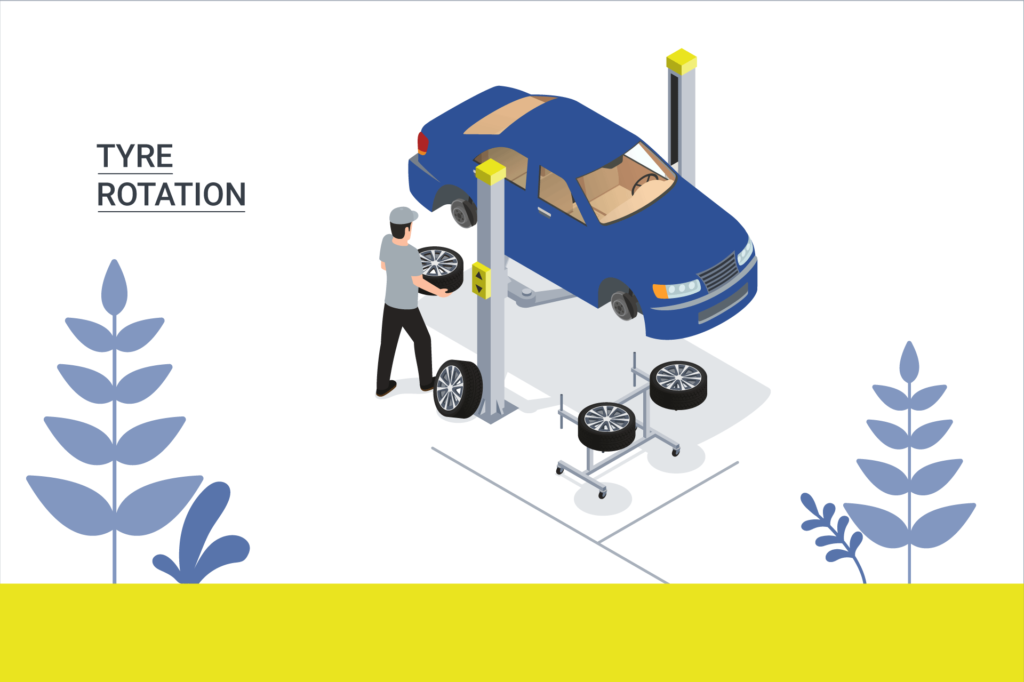Tire rotation

Tire rotation is a crucial maintenance task that involves changing the position of each tire on a vehicle to ensure even tire wear. This process helps to extend the lifespan of your tires, improve vehicle handling, and enhance overall safety. Here’s a comprehensive guide to tire rotation:
What is Tire Rotation?
Tire rotation is the practice of moving each tire from one position on the vehicle to another. For example, the front tires may be moved to the rear, and the rear tires may be moved to the front, often with specific patterns depending on the vehicle’s drive type and tire wear patterns.
Why is Tire Rotation Important?
Even Tire Wear: Tires wear differently depending on their position and the type of drive (front-wheel drive, rear-wheel drive, all-wheel drive). Regular rotation ensures that all tires wear evenly, which prolongs their life.
Improved Handling: Uneven tire wear can affect vehicle handling and stability. Regular rotation helps maintain balanced handling and control.
Enhanced Safety: Even tire wear contributes to better traction and grip, reducing the risk of skidding or loss of control, especially in adverse weather conditions.
Cost Savings: By extending the life of your tires through regular rotation, you can delay the need for costly replacements.
How is Tire Rotation Done?
Check Tire Pressure: Before rotating the tires, check and adjust the tire pressure to the manufacturer’s recommended levels. Uneven pressure can affect wear patterns.
Lift the Vehicle: Use a jack and jack stands or a lift to raise the vehicle, ensuring it’s secure before removing the tires.
Remove the Tires: Loosen and remove the lug nuts from each wheel, then take off the tires.
Rotate the Tires: Follow a specific rotation pattern based on the vehicle’s drive type and tire condition. Common patterns include:
- Front-Wheel Drive: Move the front tires to the rear on the same side, and the rear tires to the front on the opposite side (e.g., rear left to front right and rear right to front left).
- Rear-Wheel Drive or All-Wheel Drive: Move the rear tires to the front on the same side, and the front tires to the rear on the opposite side (e.g., front left to rear right and front right to rear left).
- Directional Tires: If the tires are directional (designed to rotate in one direction), they should be rotated only from front to rear on the same side.
Reinstall the Tires: Place each tire in its new position and hand-tighten the lug nuts.
Lower the Vehicle: Carefully lower the vehicle and remove the jack stands or lift.
Tighten Lug Nuts: Once the vehicle is on the ground, use a torque wrench to tighten the lug nuts to the manufacturer’s specified torque.
Check and Adjust Tire Pressure: After rotation, recheck the tire pressure to ensure it’s correct.
Test Drive: Take the vehicle for a short test drive to ensure that everything feels normal and there are no unusual vibrations or handling issues.
